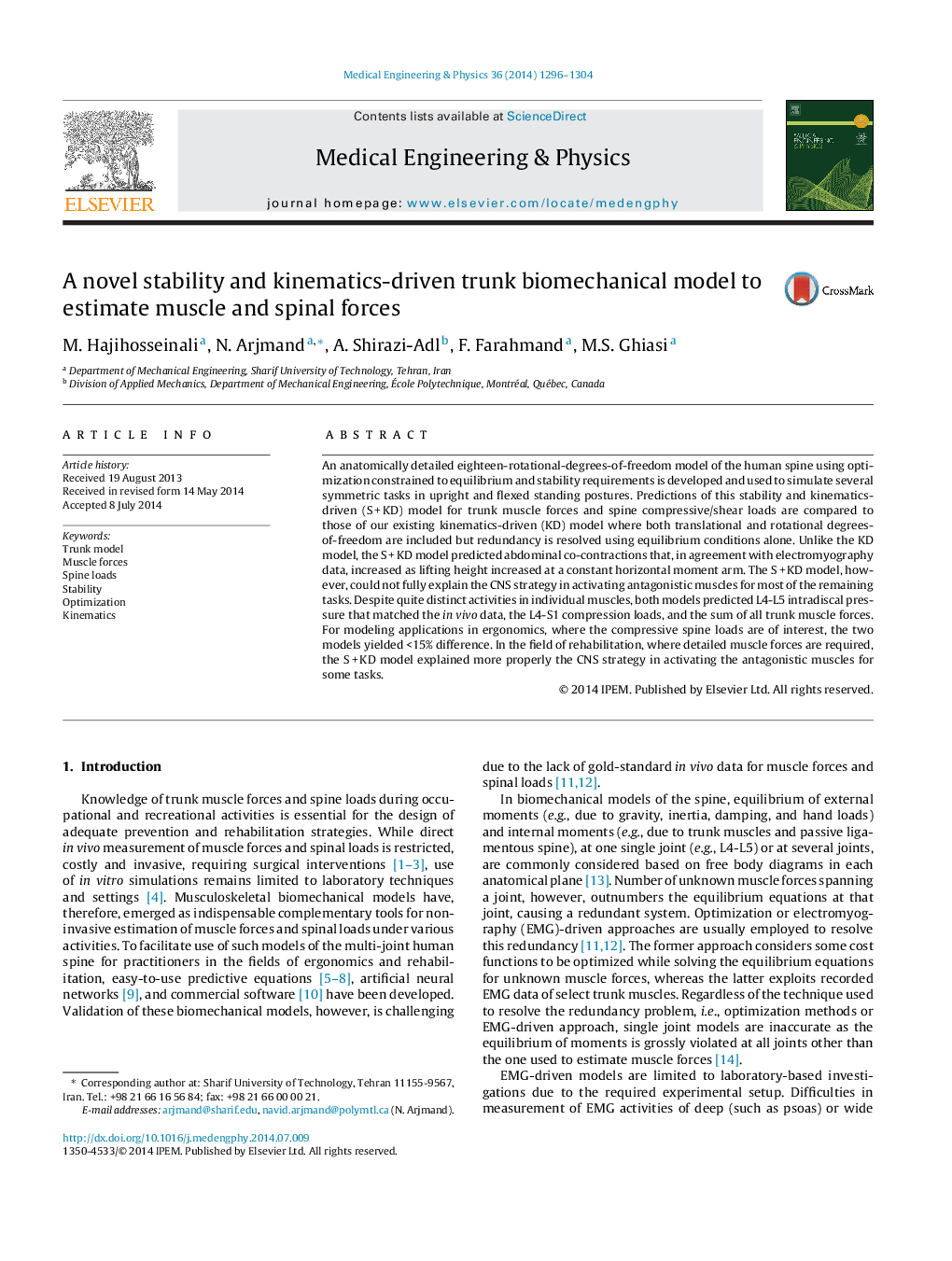| کد مقاله | کد نشریه | سال انتشار | مقاله انگلیسی | نسخه تمام متن |
|---|---|---|---|---|
| 875814 | 910810 | 2014 | 9 صفحه PDF | دانلود رایگان |
An anatomically detailed eighteen-rotational-degrees-of-freedom model of the human spine using optimization constrained to equilibrium and stability requirements is developed and used to simulate several symmetric tasks in upright and flexed standing postures. Predictions of this stability and kinematics-driven (S + KD) model for trunk muscle forces and spine compressive/shear loads are compared to those of our existing kinematics-driven (KD) model where both translational and rotational degrees-of-freedom are included but redundancy is resolved using equilibrium conditions alone. Unlike the KD model, the S + KD model predicted abdominal co-contractions that, in agreement with electromyography data, increased as lifting height increased at a constant horizontal moment arm. The S + KD model, however, could not fully explain the CNS strategy in activating antagonistic muscles for most of the remaining tasks. Despite quite distinct activities in individual muscles, both models predicted L4-L5 intradiscal pressure that matched the in vivo data, the L4-S1 compression loads, and the sum of all trunk muscle forces. For modeling applications in ergonomics, where the compressive spine loads are of interest, the two models yielded <15% difference. In the field of rehabilitation, where detailed muscle forces are required, the S + KD model explained more properly the CNS strategy in activating the antagonistic muscles for some tasks.
Journal: Medical Engineering & Physics - Volume 36, Issue 10, October 2014, Pages 1296–1304
